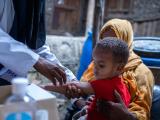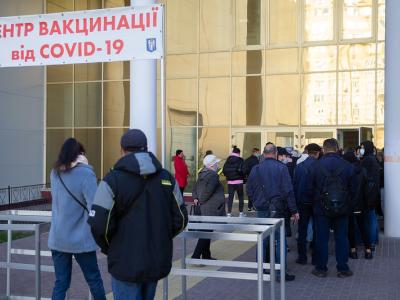Oct 9, 2002 (CIDRAP News) Two leading medical societies this week urged caution on proposals for smallpox immunization for the public, days after federal health officials expressed qualified support for the idea.
Citing the risks posed by the vaccine, the American Academy of Pediatrics (AAP) endorsed the current official federal policy of waiting until an outbreak occurs and responding with ring vaccination, rather than launching a mass immunization campaign either before or after any smallpox outbreak. However, the group said that the development of safer vaccines or an increase in the likelihood of a smallpox outbreak could prompt a change in its position.
Meanwhile, the American Medical Association (AMA) said it stands by its previously stated support of a federal advisory committee's recommendation that smallpox shots be reserved for certain healthcare workers and others who would have to deal directly with a smallpox outbreak. However, the AMA said it will be discussing the issue again at a meeting in December.
The AAP and AMA statements came just a few days after top federal health officials, in an Oct 4 press briefing, said they favor offering smallpox vaccine to the public once most emergency and healthcare workers have been immunized. A White House decision on the shape of the expected immunization program for healthcare and emergency workers is currently being awaited. In newspaper accounts of the Oct 4 briefing, CDC Director Julie Gerberding and other officials said voluntary shots for the public could begin as soon as 2004.
The CDC's current smallpox response plan emphasizes ring vaccination, or surveillance and containment, including isolation of smallpox patients and rapid identification and vaccination of their contacts. The plan envisions mass immunizations only if officials determine that ring vaccination cannot stop the outbreak. But on Sep 23 the CDC released its "Smallpox Vaccination Clinic Guide," designed to help state and local health agencies prepare for mass immunizations in case smallpox reemerges. In releasing the guide, CDC officials signaled that even a single smallpox case could be enough to trigger a nationwide immunization drive. And at the Oct 4 briefing, Assistant Secretary for Public Health Preparedness Jerome Hauer said state health departments have until Dec 1 to submit plans for completing mass immunizations within 5 to 10 days after a smallpox outbreak.
The AAP policy statement came in an Oct 7 news release and an accompanying article in the October issue of Pediatrics. In endorsing ring vaccination, the AAP stated, "This strategy can control a localized outbreak with minimal exposure of vulnerable populations to the complications of immunization." The statement said ring vaccination "would be more desirable than a pre-event mass immunization campaign" for several reasons, including the following:
- The strategy was used effectively to eradicate smallpox in the 1960s and 1970s.
- In a universal immunization program, adverse events would be more common than in the past because more people now have contraindications such as weakened immune systems and autoimmune disorders.
- The supply of vaccinia immune globulin (VIG) for treating patients with serious adverse events would run short in a universal immunization effort.
- Past immunization efforts have focused on children, and elderly people (who would be vaccinated in a universal campaign) may be more susceptible to vaccine-related complications.
- If an outbreak occurred, "initiation of mass immunization may lead to improper reliance on this strategy to control the outbreak with less focus on other essential outbreak control measures," such as surveillance and containment.
The AAP said 1960s studies showed that about 1,200 of every 1 million people vaccinated suffered serious complications, and data from 1968 showed that 40 people per million had potentially life-threatening reactions. The group also contended that a large share of the public doesn't fully understand the risks of vaccination.
The AAP said it should be explained to the public that ring vaccination means that vaccination would be mandatory for exposed people (unless they have medical exemptions) and that quarantine might have to be used.
The AMA explained its position in a brief statement released Oct 7 and revised Oct 8. The group said it endorsed the smallpox vaccine recommendations issued in June by the Advisory Committeee on Immunization Practices, calling for vaccination only for healthcare workers who would be on the front lines in the event of a smallpox outbreak.
"The need for further voluntary vaccination beyond front-line health care workers is a very complex issue," said AMA Trustee Timothy Flaherty, MD. The risk of a smallpox attack must be weighed against the risks of a mass vaccination strategy, and there are concerns about the logistics of mass vaccination and who will bear the responsibility for injuries and deaths caused by it, the statement said. The AMA will consider these issues at its interim meeting in December, officials said.
See also:
AAP Committee on Infectious Diseases. Smallpox vaccine. Pediatrics 2002;110(4):841-5 [Abstract]




















